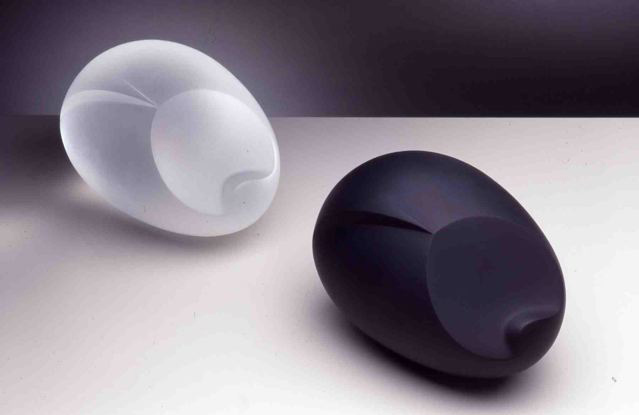Sherrie Levine (born April 17, 1947 in Hazleton, Pennsylvania) is an American photographer and conceptual artist.
She studied at the University of Wisconsin, Madison (BA 1969, MFA 1973). Biographical information on Levine is limited, since she has refused to participate in ‘myth-making’ associated with art production. She first gained critical attention in the early 1980s, when she was associated with Cindy Sherman, Robert Longo, David Salle and others known as ‘Appropriationists’ for drawing on existing imagery from ‘high’ and ‘low’ culture. Her works have been interpreted as a commentary on the death of Modernism and its ideals, notions of artistic originality, the authenticity and autonomy of the art object and its status as a commodity. In Untitled (after Walker Evans) (10×8 photograph, 1981) Levine re-photographed a reproduction of a photograph by Evans. Such works articulated her fascination with the photographic process and its reproduction, while raising post-structuralist discourses on authorship, originality and history, from which they partly derive. Levine’s theoretical rigour was complemented by a delicate, timid, if not remote, handling of materials, adding a sensuous dimension to an otherwise academic pursuit.

False God, 2007, cast Bronze, courtesy the artist and Simon Lee, London.

After Walter Evans 4, 1981, gelatin silver print, gift of the artist to the Met. © Sherrie Levine.
Levine is best known for the work shown in “After Walker Evans”, her 1980 solo exhibition at the Metro Pictures Gallery. The works consist of famous Walker Evans photographs, rephotographed by Levine out of an Evans exhibition catalog, and then presented as Levine’s artwork with no manipulation of the images. The Evans photographs—made famous by his book project Let Us Now Praise Famous Men, with writings by James Agee—are widely considered to be the quintessential photographic record of the rural American poor during the great depression. The Estate of Walker Evans saw it as copyright infringement, and acquired Levine’s works to prohibit their sale.

Skull, 2001, cast bronze, courtesy the artist and Walker Art Center.

Khmer Torso, 2010, cast bronze, courtesy the artist and Simon Lee, London.
Deploying a wide range of media including photography, painting, and bronze, Sherrie Levine’s work raises questions about art’s relationship to originality, authorship, and authenticity. Since the late 1970s, much of her practice has been posited as an explicit, secondary return to prior works by mostly male modern masters, notably in her early photographs including After Walker Evans (1981), for example, created by rephotographing a familiar picture by Walker Evans reproduced in an exhibition catalogue.

Black Mirror: 8, 2004, mirrored glass, mahogany frame, courtesy the artist and Walker Art Center.
Discourse surrounding Levine’s practice has tended to focus on the problem of authorship and the subversion of the unique art object. Levine’s re-photography and her re-productions of Duchamp’s ready-mades have provided important critiques of artistic institutions and practices. But by 2011, appropriation itself has become so thoroughly appropriated that it is difficult to view Levine’s work as critical. Not only have the ideas put forth by appropriation been thoroughly diluted by time and repetition, the idea that appropriation subverts the author’s function was a questionable one from the start.

President Collage: 1, 1979, cut-and-pasted printed paper on paper, the MoMA collection. © Sherrie Levine.
“I want to put a picture on top of a picture,” Levine says. “This makes for times when both disappear and other times when they’re both visible. That vibration is basically what the work’s about for me—that space in the middle where there’s no picture, but emptiness.”

Fountain (After Marcel Duchamp: A.P.), 1991, cast bronze, courtesy the artist and Walker Art Center.
It is impossible to remove the art historical aspect to Sherrie Levine’s art. She works within the space of art historical discourse and dialogue, in attempts to add new perspectives on art by actually appropriating and reproducing them in novel ways. So much of the importance of her works derives from the fact that these works are recognizable within the general American public, but more importantly in the art historical canon. As mentioned before, her photographs are steeped in the rhetoric of 20th Century American male modernist masters, and her sculptures are equally so. Using Duchamp, Donald Judd, Brancusi, Dada, etc. as her material, Levine attempts to recast these sculptures in attempts to represent them yet refine them– she adds new layers of meaning to them through adding new layers of physical material.

Crystal Newborn, 1993, cast crystal, Private Collection; and Black Newborn, 1994, cast glass, The Kwon Family. © Sherrie Levine.
Text collaged from various sources.

